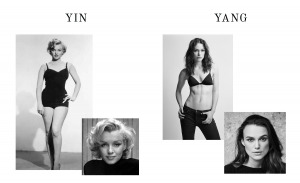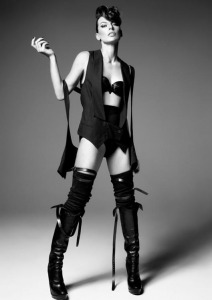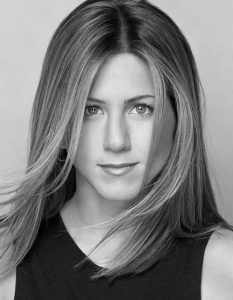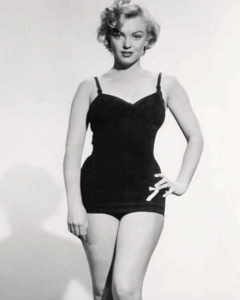My Kibbe body type is “Flamboyant Natural.”
Are you wondering what or who a “Kibbe” is? I was too, which is why I’m writing this article. Take a journey with me as we depart from the traditional body shaping system — you no longer have to restrict your body type to an hourglass, pear, apple, inverted triangle, or rectangular physique.
We’re branching out into more specific body types that will help you dress for your shape and way out of the typical shape zone!
I’m an hourglass (in case you were wondering) but no more. I’m a “flamboyant natural,” which means my “Body flesh and facial features are probably broad and blunt (yes), tending towards muscularity (uh, in some parts), but your bone structure is long and lean like a Dramatic.”
I am a drama queen, but in the Kibbe body world, my bones are the only dramatic parts – I’ll take that as a compliment.
What Is The Kibbe Body Type System?
The Kibbe body type is a more advanced way of typing your shape and gives a new meaning to your look.
So, what exactly is it and where did it come from?
According to The Concept Wardrobe, “The Kibbe body types are an array of 13 style types based on physical characteristics (and personality essence).” The system was introduced by its namesake David Kibbe in the 1980s.
“Unlike the traditional (fruit) body shape theory, which focuses on achieving balance and symmetry, Kibbe’s archetypes are more in line with style essences theory. These theories aim at creating an overall harmonious style image of a person rather than focusing on styling individual body parts.”
The Kibbe Body Type System
The Kibbe body types are a complete image system based mainly on a person’s levels of feminine and masculine energy (yin and yang).
“There are 13 different body types, each falling somewhere along two axes: yin/yang and contrast/blended,” says Kibbe’s system.
“Short, tall, straight, curvy – whatever your features, coloring, or ethnicity – David conceived and gave birth to the previously unheard-of concept of valuing, accepting, celebrating as well as emphasizing those characteristics instead of trying to conceal them to fit into some arbitrary standard of beauty,” according to Kibbe’s website.
Where on the sphere a person lands depends on their physical appearance and personality traits and establishes their Kibbe body type. Each Kibbe body type comes with parameters encompassing all factors of personal appearance including clothing, hair, and makeup. The goal is to attain a complete, coordinated look.
The objective of the Kibbe body system is to help people pin down their individual shape and to dress accordingly. And to broaden understanding of why they are inclined towards particular styles or why certain clothes just don’t seem to fit them.
The Main Kibbe Body Types
The Kibbe body type system involves 5 main categories and then broadens into 13 image-based body types.
“The Kibbe body type system focuses on an axis of yin (curved, soft) versus yang (angular, structured). The 5 main types along the scale are: dramatic, natural, classic, gamine, and romantic,” says Kibbe.
“And within that scale becomes 13 more specific body types, which examine how much contrast/blending there is of each main family.
“Each of these 13 types is labeled as a Kibbe Image Identity Type — an image ID — and it covers your entire look and style. It covers your entire appearance including style/clothing, hair, face shape, and makeup, which, in turn, creates a more in-depth way to examine your body type.”
-
Petite Yin: Characterized by delicate bone structure and small features (nose, hands, feet, stature)
-
Lush Yin: Characterized by fuller lips, large eyes, hourglass curves, and a more sexual essence
-
Soft Yang: Characterized by blunt edges, broad/horizontal features, and a slightly broad physical body shape that still has verticality
-
Sharp Yang: Characterized by verticality, sharp lines and edges, elongated bodies, and very little definition along the waist.
The 13 Kibbe Archetypes
“Rather than achieving symmetry, Kibbe’s focus is on achieving harmony. By recreating your natural, unique Yin/Yang balance in your clothing, your clothes will look very natural on you. As opposed to trying to live up to a certain style type, Kibbe argues the need to follow your natural lines,” says The Concept Wardrobe.
There are 13 Kibbe archetypes, some of which blend and fall under two of the main archetypes – which is why I was typed as a Flamboyant Natural. To keep it short and sweet, we’re going to cover the main five types, but when you take the test, you’ll see if you’re strictly one or a combination!
Dramatic
The Dramatic family sits on the very left of the yin/yang spectrum and is defined by sharp yang. This type family has no yin influence. That means a Dramatic will appear very elongated with sharp edges.
Natural
The Natural family is also yang dominant but to a slightly lesser degree (soft yang). There is a small amount of yin in the blended mix. That means, while they are still angular, their edges are less sharp and more blunt.
Classic
The Classic family is characterized by a balanced blend of yin and yang. They will appear very symmetrical with moderate features.
Gamine
The Gamine family is characterized by a combination of yin and yang. This is different from Classics as a Gamine’s features will not be blended but will be either (petite) yin or (sharp) yang.
Romantic
The Romantic family sits on the far right end of the Yin/Yang spectrum and is characterized by lush yin with no yang influence. They will appear very soft with round edges.
Find Out Your Kibbe Body Type
If you want to know what your Kibbe body type is so you can update or make the most of your look, there’s a test you can take!
The Concept Wardrobe says “The test is a comprehensive, guided version of the original test published in David Kibbe’s 1987 (out-of-print) book Metamorphosis.”
Take the Kibbe body type test here.

Did you take the test? Were you surprised to see so many different body types? Share in the comments!
For More Fashion And Style Tips, Check Out These Articles Next:









